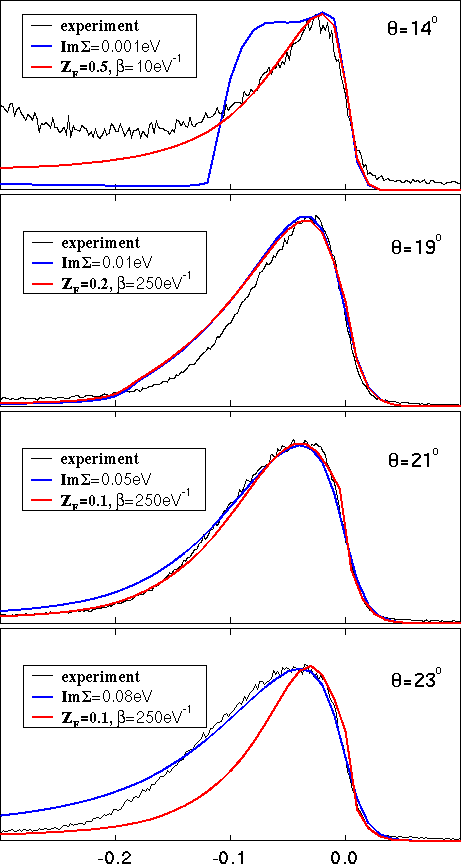
 |
Photoemission line shapes and many-body correlations |
![]()
|
Many-particle effects may have strongly influence on the linewidths and
line shapes of angle resolved photoemission spectra. With increasing
experimental resolution this has given rise to line shape analyses to get
a deeper insight into these interactions.
The influence of many-particle effects on photoemission and the need for
sophisticated analysis methods are demonstrated here by the comparison of
calculated spectra with experimental data.
Recently an approach has been proposed for the analysis of experimental data, which adjusts model spectral functions for the initial state to directly match the photoemission line shapes. Photocurrents calculated with spectral functions from those determinations are found here to give poor results in comparison with the experiment. These spectral functions appear not to be reliable. For an accurate analysis the difference between a photoemission spectrum and the initial state spectral function has to be taken into account. This is done by fitting the calculated spectra to the experimental data with help of the parameters in the spectral function. A nice agreement results, as can be seen in Fig. 2.
 Fig. 2: Influence of the many-particle effects in the initial state on photoemission spectra, which are calculated for TiTe2 along the GammaM direction near the Fermi edge. Each panel contains three curves: experimental data (black lines), calculated data using an adjusted constant, purely imaginary self-energy (blue lines) and calculated data using a corrected Fermi liquid self-energy by Matho (red lines).
This is a study about the power of Fermi liquid models for the description
of photoemission line shapes. Therefore for each spectrum the optimal parameters
of the spectral function are determined. The best results gives a model
by Matho. These results are compared in Fig. 2 with the best choices for a
constant self-energy and with highly resolved experimental data.
Within a small energy and angle interval, where
the peak remains close to the Fermi level, Fermi-liquid behavior seems
to be confirmed. This angular range appears to be still smaller than that
found by direct fitting of the spectral density to the experimental data.
See also:
|
1995
![]()
 |